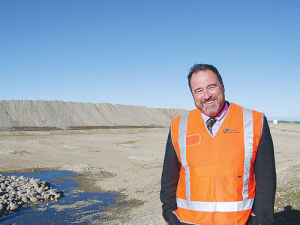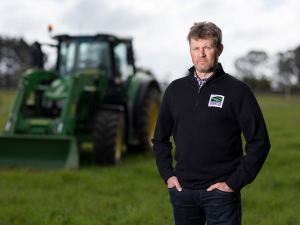The report presented last week to the Ashburton water management zone committee said groundwater levels below the site have risen as much as 5m and nitrate levels fallen to levels well below the committee’s 2035 targets.
The Hinds/Hekeao managed aquifer recharge (MAR) pilot project consists of a purpose-built unlined ‘leaky’ pond about 10km inland of SH1 south of Ashburton.
It is fed by water from the Rangitata River via the Rangitata diversion race and Valetta irrigation scheme, and allows it to percolate into the underlying gravels to recharge the aquifers.
The project has three aims: to raise groundwater levels, reduce the nutrient load in groundwater by dilution, and restore habitats in the lower catchment by increasing flows into the spring-fed lower drains.
The report confirms that the first two aims are being met and the third not yet, only because the plume of recharged water moving through the aquifers has yet to reach the lower springs.
The report said the trial has successfully demonstrated the viability of MAR to improve groundwater quality and stored groundwater volumes in the aquifers.
“No ‘fatal flaws’ have been identified in the use of MAR to support the Ashburton zone committee in achieving community objectives for groundwater quality and levels within the Hinds catchment,” said the report.
“However, significant questions remain, such as ‘what are the optimal MAR site designs?’ and ‘where will the future source water come from and how much will it cost?’
“These questions will be addressed in the next phase of the project.”
Local farmer Peter Lowe, chairman of the governance group overseeing the project, emphasised that the recharge technique has to be seen in conjunction with onfarm mitigation.
It is just one tool “to help the community achieve its water quality aspirations without buggering the economy”.
Simply not taking water from the aquifer will not meet the second aim of the project -- to dilute the nutrient load. ECan rules are now in place, the water take is capped, and farm environment plans and nutrient budgets are required, said Lowe.
The report identified some sediment build-up (clogging) responsible for slowing the infiltration rate in the later stages of the trial, but said that is a standard operational issue in MAR schemes, requiring ongoing management.
The water used for the trial is an unused Ashburton District Council allocation. An estimated 2.4 million m3 has gone through the pond, leaving another 13.3m m3 still available for further testing.
Lowe said the next stages in the five-year pilot project will be to redesign the site a little to improve the filtration rate, and write a business plan for setting up more MAR sites across the Hinds Plain catchment. It is hoped to test about 12 potential new sites.
The trial’s chief hydrologist, Bob Bower, said a fourth main goal of the project is to start an education and outreach conversation with the community over groundwater.
“We’ve done well in that space. There are still concerns about what the project may or may not do, and there are arguments over the water, but we have a consortium of environmental groups, the local marae and the irrigators, so we have the right people together at the table talking about concerns and issues; that’s a success.”
Bower said the project has achieved a “nice” 12km footprint of increased water levels – one of the very few areas in the Canterbury region to have recorded improvement in a recent regional groundwater report.
Bower said further sites will now be evaluated for suitability, including soil types and feasibility of water supply.
















